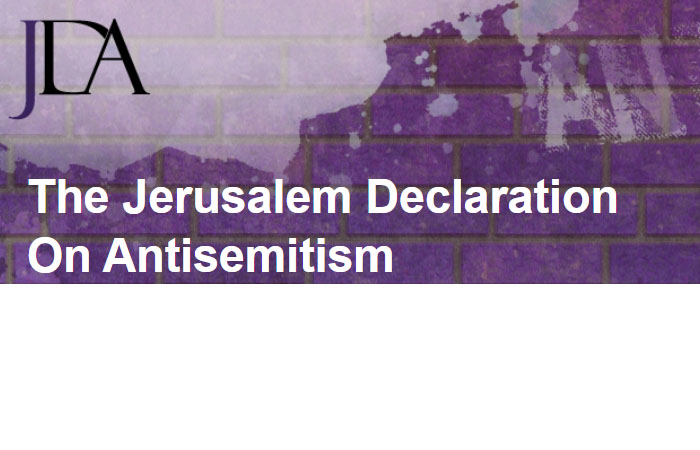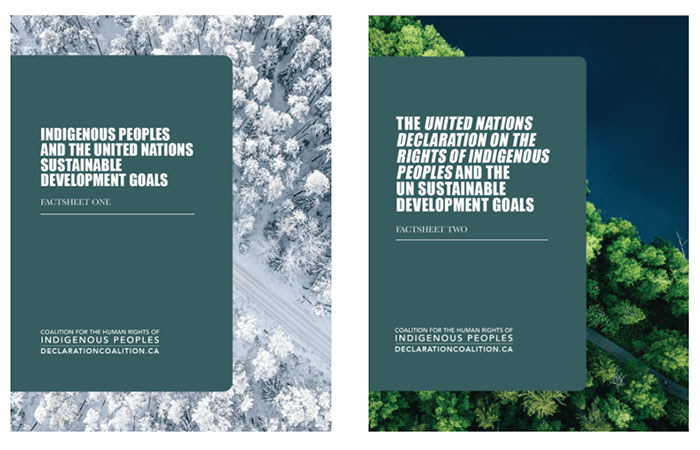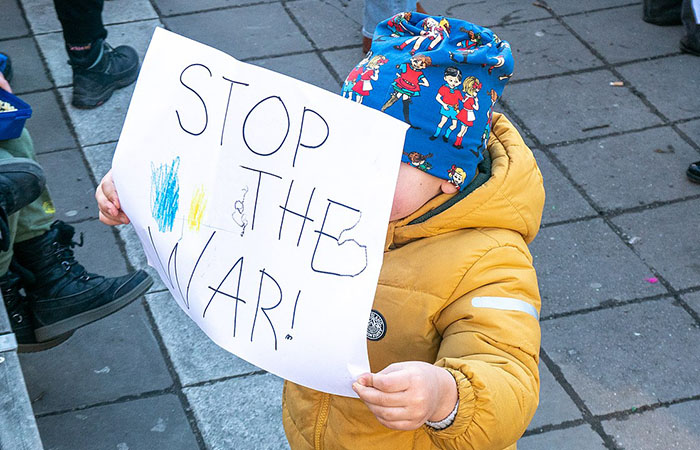
CFSC endorses Jerusalem Declaration on Antisemitism
February 25, 2022
Fact sheets on Indigenous peoples and the UN’s Sustainable Development Goals
March 9, 2022“If we are looking once more to [violent] force for our security, the world has learned no lesson.”
— London Yearly Meeting of the Religious Society of Friends, 1919
Our hearts ache with the images of the suffering right now in Ukraine. For 75 years wars have not resulted in clear military victories.[1] The idea of decisive military victories, or the military providing a solution at all in violent conflicts, is thus a remnant of a bygone era.
So we know for sure what doesn’t work: wars do not work. As we stated in our open letter to the government of Canada: “War is a futile problem-solving strategy. It does not lead to peace, democracy, or security. Its predictable failure comes at tremendous cost to human lives, development, and wellbeing.”

There is no other problem-solving device or policy used by governments that fails so predictably and spectacularly in such a range of tremendously harmful ways. War does, however, produce financial and career opportunities for a select few, who do their best to promote the false idea that “there is no alternative.”
So, when a situation happens like Russia invading Ukraine, a question inevitably arises in the hearts of those who support justice and peace: What are the alternatives to a violent response?[2]
These issues are addressed in depth in our book Are We Done Fighting? Building Understanding in a World of Hate and Division. The book explains many myths about violence, war, and power. It also collects and shares research and tips from peace and conflict experts. Section Five is all about the many causes of wars and the ways that those causes can be addressed without violence. The book does not claim to have all the answers by any means, but what it has to say may surprise you. (You can register here for free workshops to study the book.)
Today wars involve a vastly more complex range of non-state actors than was the case a few decades ago. This is just one of the realities that makes peacemaking and peace keeping such tough problems. There is no one “root cause” of wars, no one principal issue to address. But there are many things that can be tried. (Have a look at a model of how dizzyingly complex the factors that sustain peace are here.)
Governments have generally failed to keep pace with the complexity of modern wars, instead too often relying on outdated simplistic tools and ways of thinking. Our book shares a wealth of evidence about correlations between simplistic thinking and violence, including support for wars.[3]
The basic trend seems to be that complex thinking and a richer range of feelings—both positive and negative—toward one’s opponent is difficult (especially when strong emotions like grief and outrage are at play). Yet complex thinking and feeling, grounded in a recognition that there are always alternatives to violence, is invaluable in staying creative and, ultimately, building peace.
CFSC has communicated the importance of complexity in an open letter to the government of Canada. The value of this point cannot be overstated, because it is so challenging and because there are so many forces pulling us in the opposite direction—toward low-quality simplistic thinking.
With the need for complex thinking in mind, let’s turn to the question above: What are the alternatives that countries like Canada could support instead of a military response that we know won’t work?
Grassroots protection and peacebuilding are both essential, and happen in every violent conflict in the world. There are always creative and caring local people in dialogue, and doing compassion-based work. These efforts may not end wars, but they are certainly useful in overcoming the hatred and dehumanization that are so common during wars. Unarmed civilian protection is also increasingly being recognized for its ability to keep people safe during armed conflicts. (Our book includes a whole chapter sharing evidence and stories about unarmed civilian protection.)
There are also always unarmed civilians engaged in creative noncooperation with all systems of violence and injustice. In Ukraine right now many everyday people are bravely frustrating Russian advances through strategic noncooperation. We’ve been equally heartened to see many images of Russians taking great personal risks to march and speak out in opposition to this war within their own country.
Rather than focusing so much attention on sending weapons or training the Ukrainian military, what if countries like Canada helped build up the capacities of everyday citizens to engage in noncooperation and use other effective nonviolent strategies in response to the invasion?
At the level of States, there are really not many ways to end fighting and bloodshed. Everyone knows what’s needed: communication and negotiated political agreements.
Here’s an excerpt of Are We Done Fighting? on this point:
… As individuals there are times when continuing a conversation may not make sense, or may even be dangerous for us—say, if we’re trying to escape an abusive relationship. But, as much as dialogue can be frustrating and fruitless, governments or armed groups in conflict are always communicating anyway and aren’t made safer by cutting off dialogue. Experienced negotiator Joshua Weiss explains:
During times of crisis and conflict, more communication is needed, not less…. When negotiation is absent it is important to remember that communication does not stop, but that messages are sent with actions open to multiple interpretations. During tense large-scale conflicts between nations, when mistrust is high, most actions taken are assumed to be belligerent.
A real world example Weiss offers is one where the stakes could not have been higher—the “Cuban Missile Crisis” of 1962.
Despite incessant prodding by his military advisors that there was no other course of action but a preemptive strike, President Kennedy… kept a back channel negotiation open with the Soviet Union. It was that negotiation that kept the situation from escalating out of control. Kennedy’s overriding interest was to prevent nuclear war, have the missiles removed from Cuba, and save face for the US and he did that as well as meeting the needs of the Soviet Premier Khrushchev.
Importantly, communication is both verbal and nonverbal. We at CFSC recommended that Canada engage in communication that would deescalate the situation, and have recognized that, for many years, Canada has been doing the opposite—engaging in needless conflict escalation. (It goes without saying that this does not in any way excuse Russia’s invasion.)
The reasons for Canada’s dangerous escalation approach are many, but a common feature of international conflicts is a desire by politicians not to appear weak to their domestic audiences. So our letter acknowledged this reality and called for our leaders to choose positive communication and deescalating actions that would speak much louder than words (we gave some examples but the letter makes it clear that this isn’t an exhaustive list. Of course these things need to be attempted at the right moments).
The celebrated Quaker mediator Adam Curle, in his wonderful and inspiring books, noted that a key to reaching peace agreements is for one side to propose a solution that is not only sensible, but includes doing something they’d rather not do. One side might offer to engage in a ceasefire that gives up a tactical advantage—a proposal that clearly shows a commitment to change. This demonstrates genuine hope for a new path forward, hope that’s greater than fears.
This is what true bravery from leaders looks like. It’s rare, but there are still many examples of it.
The formula we propose is thus what we would say for any war whatsoever: keep thinking and responses complex, let go of simple rhetoric and enemy images, and engage relentlessly in diplomacy and with good will actions that demonstrate a commitment to peace.[4]
Some will say in response to this: “Yes, but Putin is ______.” Fill in the blank: crazy, evil, impossible to negotiate with, Hitler…
Have you ever heard that said before about an enemy in war? If so, was it true then? The answer is it’s a classic enemy image and is very unlikely to be true.
Adam Curle asserts that in all of his mediation efforts he never met a leader, including ones involved in waging very brutal wars, who was actually “crazy” or “pure evil”. He felt that leaders are in very difficult situations with impossible competing interests to try to navigate. So he treated them as human beings with tough jobs who sometimes made decisions he strongly opposed, but who always did so for reasons (not for no reason or with no causes).
The Norwegian peace expert Johan Galtung said once in an interview that he had no problem reaching out to Daesh and having reasoned conversations with them about their interests. This was at a time when countless war-justifying media reports claimed Daesh was too fundamentalist, anti-Western, and “crazy” to ever talk to anyone from the West.
What the experiences of mediators and negotiators suggest, then, is to be very cautious about accepting the fatalistic diagnosis that Putin is “the problem,” is impossible to communicate with, and therefore the only option is more violence. The best option is always prevention of violence before it happens. There are always nonviolent options to prevent wars, but too frequently they aren’t invested in. Even after wars have started, though, there are still always nonviolent options.[5]
Putin is certainly one part of the problem, but the problem is a whole complex adaptive system of factors. So when thinking about violent conflicts of all types, give up the simple narrative that says one individual is “crazy” and is therefore “the problem” and refocus on the many ways to work for peace.
What we know for sure is that wars do not end in clear victories and do not increase stability or security.
Yet, in Canada and many other countries, myths of violent power being effective and righteous are deeply embedded in our culture. This comes from deliberate attempts to build support for the effectiveness and morality of war. It comes from ancient Christian ideas about just war. It comes from our education system misrepresenting wars and alternatives to them.
But remember: there are always alternatives.
Notes
[1] There are only a few exceptions to this in wars involving very small armies, most notably the US invasion of Grenada (a country with only 1,500 soldiers at the time) in 1983.
[2] Some may also ask: Isn’t military self-defense from Ukraine, and support for this violence from Canada, moral and necessary? This question is based in the assumption that violence in response to an invasion by a stronger military somehow keeps people safer. History shows this to be a very debatable assumption at best. It may arise from general misunderstandings about the power of active nonviolence.
Evidence for the power of active nonviolence is woven throughout our book Are We Done Fighting?. See also: https://nvdatabase.swarthmore.edu for a searchable database; https://WagingNonviolence.org; https://www.MettaCenter.org; https://www.EastPointPeace.org; https://NonviolenceNews.org; and https://BeautifulTrouble.org to learn more about the power of nonviolence.
Political scientists and sociologists such as Gene Sharp, Erica Chenoweth, Maria Stephan, Kurt Schock, Wendy Pearlman, Jonathan Pinckney, Orion Lewis and others have studied nonviolence in various contexts. Their general finding is that it doesn’t always work. But then, nothing always works. There are no guarantees in large-scale complex conflict situations. Nonviolence does, however, succeed at achieving most of its goals more often than violence does. And when it succeeds, it does better at preserving life and the possibilities for stability and positive peace in the countries where it’s used. Wars don’t end when the fighting stops. The violence societies do to themselves during wars (in dehumanizing their enemies and becoming more violent and less caring in the process) can live on in lost social fabric. Active nonviolence, on the other hand, is a form of power that can positively unite people and does not have to be harmful to those who wield it.
At CFSC we’ve spent many years researching, reflecting deeply, and engaging in spiritual listening and discernment, together with Friends from across Canada, about military responses in various situations (see https://quakerservice.ca/wp-content/uploads/2011/06/summary-of-discernment-R2P.pdf and https://quakerservice.ca/4Elements). We’ve come to feel clarity that militaries are less likely to achieve good ends such as protecting people, and that what little good they might achieve comes at an unacceptable cost (to human and nonhuman life, to our creativity and humanity, and to our societies, which could direct these resources and energies elsewhere). For these many reasons, and in keeping with our peace testimony, we support active nonviolence and do not support killing.
[3] This is a very challenging point for most of us in part because we each tend to feel that we’re right (and many of us feel very certain about it). Especially during large-scale violent conflicts there is a tendency to “rally around the flag” and to see the other side as the “bad guy.”
For the benefits of intellectual humility (openness to the possibility that you might be wrong) see: https://greatergood.berkeley.edu/article/item/what_does_intellectual_humility_look_like
For the benefits of curiosity see: https://www.psychologytoday.com/us/blog/are-we-done-fighting/202104/why-its-better-stay-curious-make-assumptions
The evidence with regard to moral certainty is mixed. Moral certainty can lead to the very best kind and altruistic behaviours, but also feeling good about causing tremendous harm. People who are high in moral certainty and low in complexity of thought are more likely, for instance, to see bombing an enemy as a good thing. See Maggie Campbell and Johanna Ray Vollhardt, “Fighting the Good Fight,” Personality and Social Psychology Bulletin 40, no. 1 (2014); Linda Skitka and Elizabeth Mullen, “The Dark Side of Moral Conviction,” Analyses of Social Issues and Public Policy 2, no. 1 (2002); for a powerful story of someone who grew up with great moral conviction but then moved to a sense of complexity https://www.ted.com/talks/megan_phelps_roper_i_grew_up_in_the_westboro_baptist_church_here_s_why_i_left.
We’ve received several complaints for not being morally certain enough or not strongly criticizing the other side (Russia) enough. Please note that none of CFSC’s work is an argument in support of actions taken by any actors in this complex war. But we do lift up the importance of complexity. For more on the value of complexity see: https://www.psychologytoday.com/us/blog/are-we-done-fighting/201908/either-or-thinking-is-making-your-life-worse; Lucian Gideon Conway et al., “Integrative Complexity and Political Decisions that Lead to War or Peace,” in Eds. Daniel Christie et al., Peace, Conflict, and Violence: Peace Psychology for the 21st Century (Prentice-Hall, 2001); Eolene Boyd-MacMillan, “Increasing Cognitive Complexity and Collaboration Across Communities,” Journal of Strategic Security 9, no. 4 (2016); and https://www.youtube.com/watch?v=FpmSC7ajIeU.
Our letter, directed to the government of Canada, points out the well-known fact that in conflict situations each side feels a sense of superior insight and of moral righteousness. Each side filters their beliefs and decisions through this lens. See for instance Urie Bronfenbrenner, “The Mirror Image in Soviet-American Relations: A Social Psychologist’s Report,” Journal of Social Issues 17, no. 3 (1961); for the role of victimhood narratives here see: https://www.psychologytoday.com/us/blog/are-we-done-fighting/202202/victimhood-is-tearing-us-apart.
Actions by each side therefore appear aggressive to the other, and the other feels justified in responding in ways that they view as both moral and defensive, but that the other views as hostile and provocative. We at CFSC call on Canada to get out of this well known trap.
[4] Of course a great deal also needs to be done to support those physically, mentally, and spiritually harmed by wars both within the countries involved and as they flee to other countries. British Quakers also remind us of the importance of citizen diplomacy: https://web.archive.org/web/20240206100632/https://www.quaker.org.uk/our-work/peace/ukraine/citizendiplomacy
[5] For one list of some options Russia and Ukraine could both have used instead of war see: https://worldbeyondwar.org/30-nonviolent-things-russia-could-have-done-and-30-nonviolent-things-ukraine-could-do; for one list of actions recommended by experts working on the ground in Ukraine for peace see: https://wagingnonviolence.org/forusa/2022/03/a-peoples-guide-to-stopping-the-war-in-ukraine; for a statement signed by many peace and conflict experts about why they do not believe in the effectiveness of a military response to the Russian invasion and what they would propose instead see https://wagingnonviolence.org/rs/2022/03/ukrainians-could-defeat-a-russian-occupation-by-scaling-up-unarmed-resistance
Blog post last updated May 6, 2022. Download this post in PDF. Find out more about CFSC’s peace work.




